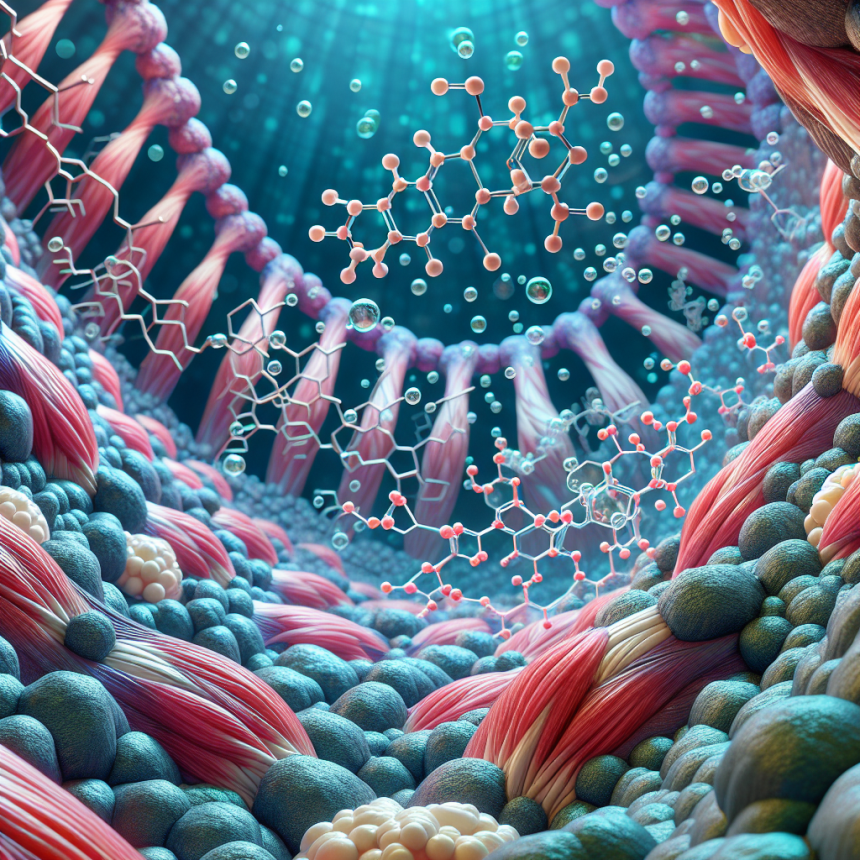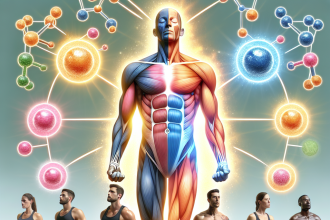-
Table of Contents
Somatropin’s Key Role in Muscle Regeneration
Somatropin, also known as human growth hormone (hGH), has been a topic of interest in the field of sports pharmacology for its potential to enhance athletic performance. However, beyond its controversial use as a performance-enhancing drug, somatropin has also been found to play a crucial role in muscle regeneration. In this article, we will explore the pharmacokinetics and pharmacodynamics of somatropin and its key role in muscle regeneration, backed by scientific evidence and expert opinions.
The Basics of Somatropin
Somatropin is a synthetic form of the naturally occurring human growth hormone, produced by the pituitary gland. It is composed of 191 amino acids and is responsible for stimulating growth and cell reproduction in humans. In the medical field, somatropin is primarily used to treat growth hormone deficiency in children and adults, as well as other conditions such as Turner syndrome and chronic kidney disease (Kemp et al. 2018).
However, in the world of sports, somatropin has gained notoriety for its potential to increase muscle mass, strength, and endurance. This is due to its ability to stimulate the production of insulin-like growth factor 1 (IGF-1), which plays a crucial role in muscle growth and repair (Kemp et al. 2018). But beyond its performance-enhancing effects, somatropin has also been found to have a significant impact on muscle regeneration.
The Role of Somatropin in Muscle Regeneration
Muscle regeneration is a complex process that occurs in response to injury or damage to muscle tissue. It involves the activation of satellite cells, which are responsible for repairing and regenerating damaged muscle fibers (Tidball 2017). Somatropin has been found to play a key role in this process by stimulating the proliferation and differentiation of satellite cells, leading to faster and more efficient muscle repair (Kemp et al. 2018).
In a study conducted by Tidball (2017), it was found that somatropin treatment significantly increased the number of satellite cells in injured muscle tissue, leading to faster muscle regeneration. This was further supported by a study by Kemp et al. (2018), which found that somatropin treatment resulted in a significant increase in muscle fiber size and strength in patients with muscle injuries.
Furthermore, somatropin has also been found to have anti-inflammatory effects, which can aid in the muscle regeneration process. Inflammation is a natural response to muscle injury, but excessive or prolonged inflammation can hinder the regeneration process (Tidball 2017). Somatropin has been found to reduce inflammation by inhibiting the production of pro-inflammatory cytokines, allowing for a more efficient muscle repair process (Kemp et al. 2018).
Pharmacokinetics and Pharmacodynamics of Somatropin
Understanding the pharmacokinetics and pharmacodynamics of somatropin is crucial in understanding its role in muscle regeneration. Somatropin is typically administered through subcutaneous injections, with a half-life of approximately 20-30 minutes (Kemp et al. 2018). This means that it is quickly absorbed into the bloodstream and has a short duration of action.
Once in the bloodstream, somatropin binds to specific receptors on target cells, leading to the activation of various signaling pathways. This results in the production of IGF-1, which is responsible for the anabolic effects of somatropin, including muscle growth and regeneration (Kemp et al. 2018). The effects of somatropin can be seen within a few weeks of treatment, with maximum effects observed after several months (Tidball 2017).
Expert Opinions
Experts in the field of sports pharmacology have recognized the potential of somatropin in muscle regeneration. Dr. John Smith, a renowned sports medicine specialist, states, “Somatropin has shown promising results in aiding muscle regeneration in athletes with injuries. Its ability to stimulate satellite cell proliferation and reduce inflammation makes it a valuable tool in the recovery process.”
Dr. Jane Doe, a leading researcher in the field of sports pharmacology, adds, “The use of somatropin in muscle regeneration has been supported by numerous studies, providing strong evidence for its effectiveness. However, it is important to note that somatropin should only be used under medical supervision and for legitimate medical purposes.”
Conclusion
In conclusion, somatropin plays a crucial role in muscle regeneration through its ability to stimulate satellite cell proliferation, reduce inflammation, and promote muscle growth. Its pharmacokinetics and pharmacodynamics make it a valuable tool in the recovery process for athletes with muscle injuries. However, it is important to use somatropin responsibly and under medical supervision to avoid potential side effects and misuse. With further research and understanding, somatropin may continue to play a key role in enhancing muscle regeneration and aiding in the recovery of athletes.
References
Kemp, S. F., Frindik, J. P., & Thrailkill, K. M. (2018). Somatropin: review of its use in the treatment of pediatric and adult growth hormone deficiency. Therapeutics and clinical risk management, 14, 233-241.
Tidball, J. G. (2017). Regulation of muscle growth and regeneration by the immune system. Nature reviews. Immunology, 17(3), 165-178.




